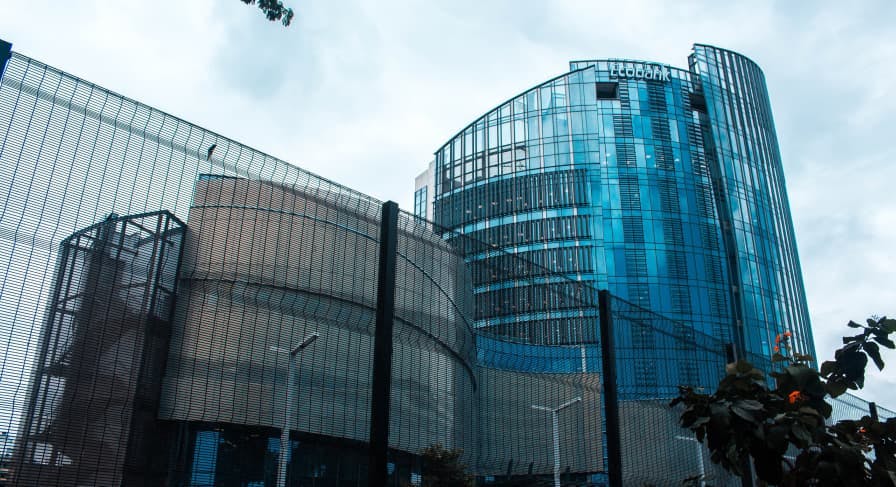ESG / CSR
Industries
Ethical Banking: 3 Banks trying to Become Socially Responsible



In the midst of climate change, customers are becoming more aware of the environmental impact that their banks can have – seeking for more sustainable investments such as ESG friendly funds, impact or socially responsible investing, and overall more ethical baking practices.
What is ethical banking, why could it prove beneficial for the environment, and what are some examples of banks trying to become socially responsible?
What is ethical banking?
Ethical banking is defined as the practice of seeking out financial institutions and practices that will adhere to socially responsible investment practices, or in other words – aim to create financial activities that will have goals beneficial to society and the environment in mind instead of only increased financial revenue as the end target.
An example of ethical banking would be a bank that is against child labor or a bank that doesn’t condone industries that emit a high amount of carbon emissions. Ultimately, ethical banking seeks to improve measures in society and aid in the ongoing environmental crisis at hand.
Banks can also be considered as ethical banking when they invest in other companies or start-ups that are interested in sustainability of environmental reform, such as how the Silicon Valley Bank did before its collapse with several companies in the tech industry. Ethical banking often seeks to establish the utmost transparency possible in order to retain the trust and commitment of their financial partners and stakeholders, many practices of which are not considered compulsory in traditional banking – whereas they are necessary in ethical banking.

What are the benefits of ethical banking?
There are several benefits to be had by both the customer, surrounding community, and environment by those who choose ethical banking. This is because socially responsible banks, or ethical banks, opt to choose a few worthy causes that will best match their main mission and ethical banking business practices.
One example of ethical banking proving as beneficial is that it can help to improve overall accessibility to banks, and ultimately help to develop a more intertwined sense of community. There are Americans across the country who still don’t have access to general banking such as a savings or checking account, and ethical banking can help make people with low-incomes or color feel more safe to join a bank. This is because most people on or below the poverty-line are unlikely to join traditional banking, as they will be subject to low balance, overdraft, or ATM fees that they often can’t afford – but ethical banking will encourage these people to join a bank and ultimately take better control of their finances.
Another example of how ethical banking can prove beneficial is that it can help to invest in opportunities that will aid in the fight against climate change or improve upon current, negative environmental circumstances. In this sense, ethical banking strives to deter from the typical oil investments that typical bankings usually invest their client’s money in – and instead, ensure bankers of ethical banking that their investments are being put to good and sustainable use.
In fact, the effort that ethical banking can have on the environment and society can even be certified, with environmental groups now offering ethical banks with programs to receive certifications for their commitment to improving the current environmental circumstances. Examples of this environmental certification include Bank Green, who offer certifications to ethical banks who do not finance fossil fuels and have claimed to not do so in the future. In addition to Bank Green, there is another environmental certification called 1% for the Planet – which allows businesses to send 1% of their overall gross sales to nonprofit organizations dedicated to environmental reform.
👉 Ultimately, one of the biggest advantages to ethical banking is that it can ensure the client that their money is being optimized by a bank with socially responsible intentions.
Lastly, another benefit of ethical banking is that it can allow them to strive for more complex certifications, such as by becoming B Corp or to join groups of other sustainable financial networks. This can help to propel the importance of ethical banking.

How can banks become socially responsible and commit to the values of ethical banking?
Banks can strive to adhere to the policies of ethical banking by the manner in which they demonstrate their commitment to various banking practices that will benefit the environment and society. However, it is important to note that ethical banking can manifest in a variety of different forms - and that ethical banking can be successful despite the different approaches.
First off, it is imperative that banks who want to transition to ethical banking publish information regarding their investment policies – which usually will include a commitment to prevent from investing in industries that could have a negative impact on the environment, such as withstaining from investing in companies that develop or make use of fossil fuels or other non-renewable resources. In order to be more specific, these publications on ethical banking policies may often also include examples of companies that the ethical or socially responsible bank in question doesn’t see fit to be a part of ethical banking.
In addition to this, another major facet of adhering to the values of ethical banking means providing and supporting services for low-income people and subscribing to DEI practices in ethical banking. In other words, no one should be denied ethical banking services – it should remain as an open and fair opportunity for all.
Another approach to ethical banking is by supporting local businesses or companies that adhere above-and-beyond to local environmental policies currently in place. This can help to further demonstrate the value of a socially responsible bank to support their society and the future of the environment’s well-being.
👉 All in all, ethical banking will strive to allocate their activities, funds, and overall efforts towards positive change for their surrounding communities and the environment – and there are several different ways that banks can adapt to the values of ethical banking.

Which 3 banks are trying to switch to ethical banking?
More and more banks are becoming interested in the concept of ethical banking, but for now – here are three examples of banks that have been making an effort to become more socially responsible and adhere to the values of ethical banking.
Sunrise Banks
One example of a bank that has made an effort to become more socially responsible is Sunrise Banks – as they have developed mortgage programs for people who wouldn’t otherwise qualify for, which demonstrates the equality and social justice necessary for banks to be deemed as socially responsible and a part of ethical banking practices. In addition to this, Sunrise Banks has also financially helped those who were in need of relief from the financial struggles created by the pandemic as well as for students who need help financing their higher education.
Sunrise Banks is also B Corp certified and has joined the Global Alliance for Banking on Values – making them a great example of a bank that has taken the steps necessary to become socially responsible and adhere to ethical banking habits.
National Cooperative Bank
This bank has been trying to transition to more socially responsible practices, as National Cooperative Bank has proclaimed that they are committed to helping communities to further develop themselves in addition to creating solutions for all. As ethical banking values require banks to provide financial services for everyone despite race and economic class, this is a step in the right direction for National Cooperative Bank to become more socially responsible.
National Cooperative Bank has also used their investments and loans to create funding for local food, improve access to local healthcare, develop cost-effective housing, and even develop new sources for renewable energy. Ultimately, by seeking to develop climate-solutions and aiding lower-income communities to provide food, shelter, and better healthcare – NCP is demonstrating their commitment to ethical banking.
Spring Bank
Spring Bank serves as a format of ethical banking as it is also B Corp certified in addition to being a member of Bank for Good Movement – demonstrating their commitment to stray from the use of fossil fuels. Originally established in New York, and serving as New York state’s first bank to become B Corp certified – Spring Bank has also been carbon neutral since 2019.
👉 In order to make the switch the ethical banking, banks can start small like any one of these companies – but they have to make an effort: such as by providing services to more people of varying ethnicity and income levels.

What could prove challenging for banks trying to adhere to ethical banking?
Clearly, it is beneficial not only to society for banks to develop more ethical banking practices – but it can also be better for the planet by preventing world hunger and excess emissions. However, some banks may find it difficult to switch to a more socially responsible banking model.
For example, some of the most popular banks in the United States remain to be Wells Fargo, Bank of America, and Chase. However, despite their popularity – these banks did not acquire the finances that they did through ethical banking practices. This is because these banks like these, such as Chase, have invested billions of dollars into fossil fuels. While this allows powerhouse banks like Chase, Wells Fargo, and Bank of America to offer more loans to their customers – it ultimately does the planet a disservice.
Therefore, banks who want to acquire a substantial following and customer-base may find it difficult to establish a bustling bank without the help of making unsustainable investments. However, the good news is that more and more people are becoming interested in the world of sustainable finance – as things like ESG funds, impact investing, socially responsible investing, and green bonds are proving their worth in the financial world.
Ethical banking is not a race, but a marathon – and any bank that is able to make a slow-but-steady effort in the transition towards more socially responsible banking practices is worthy of striving for other ethical banking certifications like global banking partnerships or a B Corp certification. In a perfect world, all banks will become socially responsible at some point, but until then – any step in the transition towards ethical banking are steps in the right financial direction.
What about Greenly?
If reading this article about these three banks trying to become socially responsible in 2023 has made you interested in reducing your carbon emissions to further fight against climate change – Greenly can help you!
Book a demo today to see how Greenly can help you with various sustainable investments.
Greenly can help you make an environmental change for the better, starting with a carbon footprint assessment to know how much carbon emissions your company produces.


